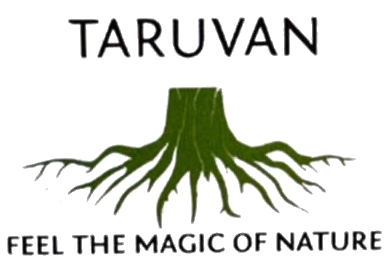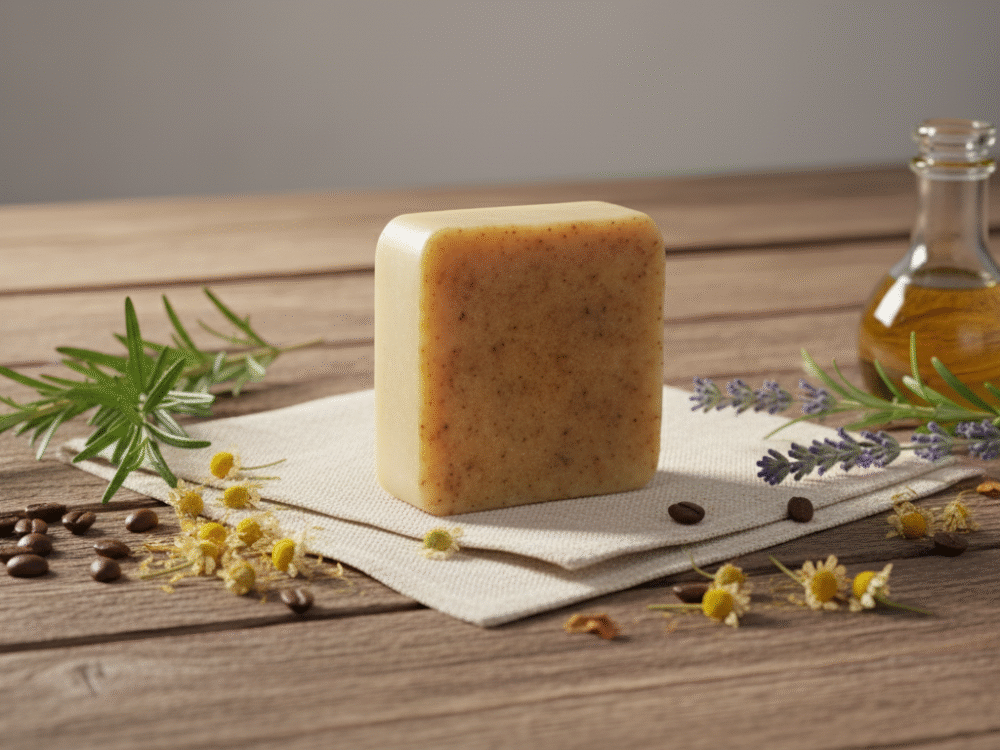Currently Empty: ₹0.00

One of the most magical moments in soap making is when the fragrance fills the air — the sweet notes of lavender, the freshness of citrus, or the depth of sandalwood dancing through your workspace. But as every soap maker soon learns, that beautiful aroma doesn’t always stay forever.
Over time, the scent can fade or weaken, leaving your lovingly crafted soap smelling… well, less fragrant than you hoped. This is where the art and science of anchoring fragrances in handmade soap comes in — a crucial skill every soap crafter needs to master.
In this post, we’ll explore why scents fade, how anchoring works, which ingredients help, and the best techniques to ensure your handmade soaps keep their fragrance for as long as possible. Whether you’re a hobbyist or a professional artisan, this guide will help you understand how to make your soaps smell divine — and stay that way.
Understanding Fragrance in Handmade Process Soap
Fragrance in soap is more than just a scent — it’s an experience. It’s what connects people emotionally to your creation. But in handmade soap, fragrance behaves differently compared to lotions, candles, or perfumes.
That’s because handmade soap making involves a chemical reaction called saponification, where oils and lye transform into soap and glycerin. This reaction creates heat and changes the environment of the fragrance, which can cause certain scent molecules to evaporate or morph.
So even if a fragrance smells heavenly in the bottle, it may fade or behave unpredictably once added to soap.
Some essential oils are particularly delicate — like citrus or floral notes — while others, such as patchouli or cedarwood, are naturally strong and long-lasting.
The challenge lies in learning how to anchor those fleeting scents — giving them a solid foundation so they linger beautifully in your final bar.
What Is an Anchor in Soap Making?
In simple terms, a fragrance anchor is a natural or cosmetic ingredient that helps “hold” scent molecules in your soap, preventing them from evaporating too quickly during curing or storage.
Anchors work by binding with the volatile compounds in essential oils or fragrance oils, slowing down their release. Think of it like planting roots for your scent — keeping it grounded, balanced, and long-lasting.
Why Do Fragrances Fade in Soap?
There are a few common reasons why soap fragrances fade over time:
- Heat from Saponification: The chemical reaction generates heat, which can cause volatile top notes to burn off or dissipate.
- Light and Air Exposure: Once soap cures, air exposure continues to evaporate delicate aromatic compounds.
- High Water Content: Excess water in the soap can lead to faster evaporation of fragrance molecules.
- Type of Fragrance or Essential Oil: Some oils are naturally more stable (like woodsy, spicy, or resinous scents), while others fade quickly (like citrus or floral).
- Improper Storage: Direct sunlight, high humidity, or poor ventilation can cause scent loss.
Anchoring helps reduce the impact of these factors, keeping your soap fragrant for longer.
Types of Fragrance Anchors for Handmade Soap
There are several natural and effective ingredients you can use to help anchor fragrances. Here are some of the most reliable ones used by artisan soap makers around the world:
🌿 1. Kaolin Clay (and Other Clays)
Clays, especially Kaolin Clay, are one of the most popular natural anchors. They have fine particles that can absorb and hold onto fragrance molecules.
How to Use:
Add about 1 teaspoon of Kaolin Clay per pound of oils to your recipe. You can mix the clay directly into your oils before adding the lye water, or blend it with a bit of your fragrance oil before incorporating it into the soap batter.
Why It Works:
Clays help lock the scent into the soap, slow down evaporation, and also add a silky feel to the lather — a win-win for both performance and luxury.
🌸 2. Orris Root Powder
Orris root powder, derived from the iris flower, is a traditional perfumery fixative. It helps extend the life of fragrances by acting as a natural binder.
How to Use:
Add about ½ to 1 teaspoon per pound of oils. It blends best when incorporated with dry ingredients or clays.
Tip: Orris root has a subtle violet-like aroma that complements floral and powdery scents beautifully.
🍯 3. Arrowroot Powder or Cornstarch
Both arrowroot powder and cornstarch can absorb excess moisture and help slow fragrance evaporation. They’re especially useful for lighter, more volatile oils.
How to Use:
Use about 1 teaspoon per pound of oils, mixed with the fragrance oil before adding to the soap batter.
Extra Benefit: These powders also add a soft, smooth texture to your soap.
🪵 4. Base Notes and Fixative Essential Oils
One of the most effective natural ways to anchor a fragrance is by blending it with base note essential oils — those with naturally heavier molecular structures.
Examples include:
- Patchouli
- Vetiver
- Cedarwood
- Myrrh
- Frankincense
- Benzoin resin
- Sandalwood
How to Use:
When blending essential oils, add 10–20% base note oils to your fragrance blend. These base notes slow the evaporation of lighter top notes and give the overall scent more depth and staying power.
💧 5. Resins and Botanical Extracts
Natural resins like Benzoin, Myrrh, and Labdanum are ancient perfume fixatives. They help hold scent molecules while adding warm, rich undertones.
How to Use:
Infuse the resin in a carrier oil or alcohol before adding to your soap oils. Be sure to check the compatibility of each resin, as some can accelerate trace.
🌼 6. Sodium Lactate
Though primarily used for hardness, Sodium Lactate also helps improve the longevity of scent by creating a denser soap structure, reducing fragrance loss during curing.
How to Use:
Add 1 teaspoon per pound of oils to your cooled lye water. It also makes unmolding easier!
How to Anchor Fragrance: Step-by-Step
Here’s a simple process you can follow when making your handmade soap:
- Plan Your Fragrance Blend
- Combine top, middle, and base notes for balance.
- Example: Lemon (top) + Lavender (middle) + Patchouli (base).
- This layering naturally enhances scent longevity.
- Choose an Anchor Ingredient
- Use Kaolin Clay, Orris Root, or Arrowroot Powder depending on your recipe.
- Mix the Anchor with the Fragrance
- Before adding your fragrance to the soap batter, stir it into the clay or powder. This allows the anchor to absorb and bind with the scent molecules.
- Add the Anchored Fragrance to Trace
- Once your soap batter reaches light trace, gently fold in your anchored fragrance mixture. Avoid overmixing, which can speed up trace.
- Cure Slowly
- Allow your soap to cure in a cool, dry place for 4–6 weeks. Slow curing helps the scent develop and last longer.
Tips for Long-Lasting Fragrance
- Use well-tested fragrance oils formulated for handmade soap. Not all fragrance oils behave well in high pH environments.
- Keep your curing area cool and dark to preserve scent.
- Avoid overheating your soap during gel phase if using delicate essential oils.
- Don’t overuse fragrance oil. More isn’t always better; the soap’s chemistry can reject excess oil.
- Wrap or box cured soap once fully dried to lock in the fragrance.
Essential Oils That Hold Best in Soap
If you prefer essential oils over fragrance oils, some naturally last longer in handmade soap than others:
- Patchouli
- Cedarwood
- Clove
- Anise
- Peppermint
- Lemongrass
- Eucalyptus
- Frankincense
Blending these with lighter oils (like lavender, orange, or rose) helps create a more balanced, anchored scent that endures.
Testing and Tweaking: The Key to Perfect Anchoring
Every soap recipe behaves a bit differently. Oils, additives, cure time, and even your workspace environment can affect how long a scent lasts.
That’s why testing is so important. Try small batches with different anchor combinations and take notes.
For instance:
- One batch with Kaolin Clay + Lavender EO
- One batch with Kaolin Clay + Lavender + Patchouli
- One batch with Orris Root + Lavender
Compare how each holds up after 2, 4, and 6 weeks. This practice will teach you more than any tutorial — and soon, you’ll find the perfect method that fits your unique style and recipe.
Anchoring vs. Blending: The Hidden Harmony
Anchoring is often seen as technical, but it’s also deeply creative.
When you learn to blend and anchor your fragrances thoughtfully, you’re not just making soap — you’re composing a scent symphony.
Each note — top, middle, and base — interacts differently with the soap’s chemistry, temperature, and ingredients. Anchors ensure that harmony remains stable long after the soap is cured.
The result? A bar that smells just as beautiful in week eight as it did on day one.
Troubleshooting Common Fragrance Issues
Even with anchoring, fragrance can misbehave. Here’s how to handle some common issues:
| Problem | Likely Cause | Fix |
|---|---|---|
| Scent fades quickly | Volatile oils or no anchor used | Add clay or a fixative oil |
| Fragrance morphs | High saponification temperature | Lower your soap temperature |
| Soap accelerates or seizes | Fragrance oil incompatible | Test small batches; use tested CP-safe oils |
| Uneven scent | Inconsistent blending | Mix fragrance evenly before pouring |
Remember — patience is key. Soap making is as much an art as it is a science.
Eco-Friendly Anchoring Choices
At Nurture Handmade, we always advocate for natural, skin-safe, and earth-friendly practices.
If you prefer a fully organic approach, stick to natural anchors like:
- Kaolin Clay
- Orris Root
- Arrowroot Powder
- Base Note Essential Oils (Patchouli, Vetiver, etc.)
- Natural Resins
Avoid synthetic fixatives like phthalates or artificial stabilizers — they may hold scent, but they compromise the purity of your soap.
Final Thoughts: The Beauty of a Balanced Scent
Anchoring fragrances in handmade soap is about balance — between art and science, between scent and structure, between creativity and chemistry.
When done right, it transforms a simple bar of soap into a sensory experience that lingers gently on the skin and in memory.
Every handmade soap tells a story — and fragrance is the language it speaks. Anchoring ensures that story stays with the person who uses it, long after the bubbles fade.
So, the next time you blend your oils and pour your molds, take a moment to think not just about how your soap looks — but how it will smell weeks from now. With the right anchors, your fragrance won’t just visit your soap — it will stay, settle, and make itself at home.
Because the best scents are not the strongest — they’re the ones that last.

